Yesterday, we teamed up with Chris Panetta of WordStream to explore how to use data to guide your conversion rate optimization efforts. Both Chris and Anita Garimella Andrews, VP of Customer Success at RJMetrics, shared some of the secrets they see their most successful clients adopting.
If you missed it, you can download the slide deck or watch the full event here:
Where Conventional CRO Wisdom Falls Short
Conventional thinking around conversion rate optimization often focuses on things like tweaking a button color or switching out a font type. But these small changes are only going to provide small, short-term gains. To create real impact on your bottom line, stay focused on how a change affects your business further down the funnel.
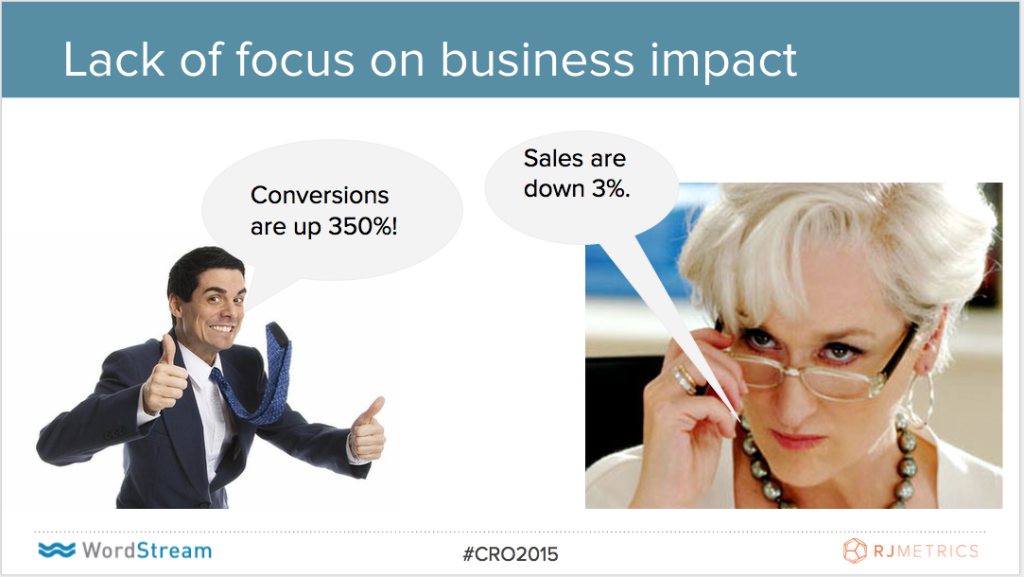
Chris also shared some great data on conversion rates by device.
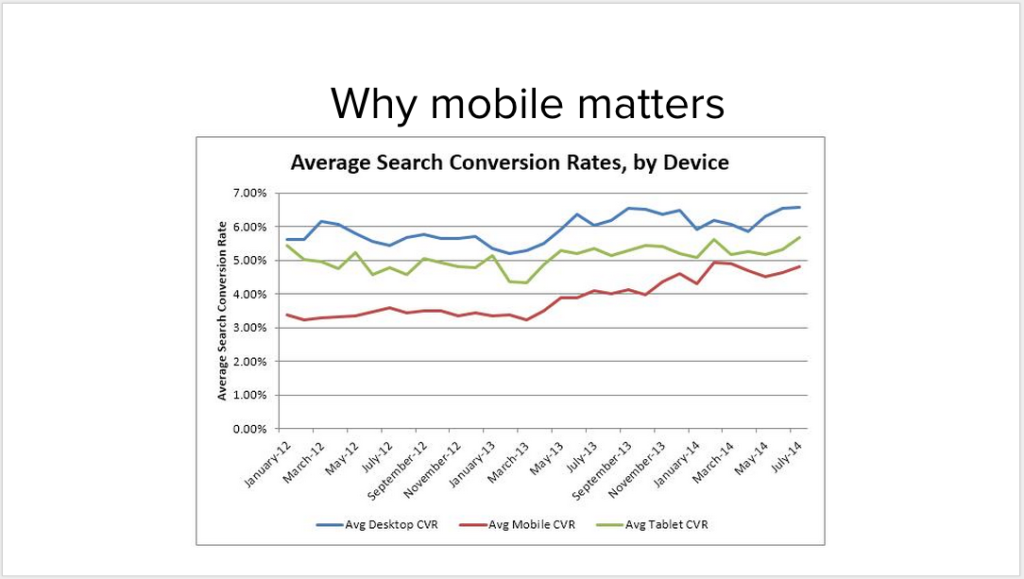
His advice:
“Don’t discount mobile until you’ve tried everything and made sure you’re tracking everything properly. It could be that your customers are coming in on mobile and converting on desktop, and if you’re not optimizing for that, you’re missing a big growth opportunity.”
Mobile people. It's all about mobile. Optimization fun with @agarimella and @RJMetrics #ThursdayTreat #CRO2015
— Uri Pierre Noel (@upierrenoel) February 19, 2015
Best-in-Class Companies Focus on the Unicorns
The top ecommerce companies don’t spend time trying to optimize across hundreds of landing pages and device types to hit some generally-agreed upon “good” conversion rate.
Instead, they focus their efforts on the pages that are already performing at the top — their unicorns. In the example below, the top 10% of landing pages have a conversion rate that blows the bottom 90% out of the water:
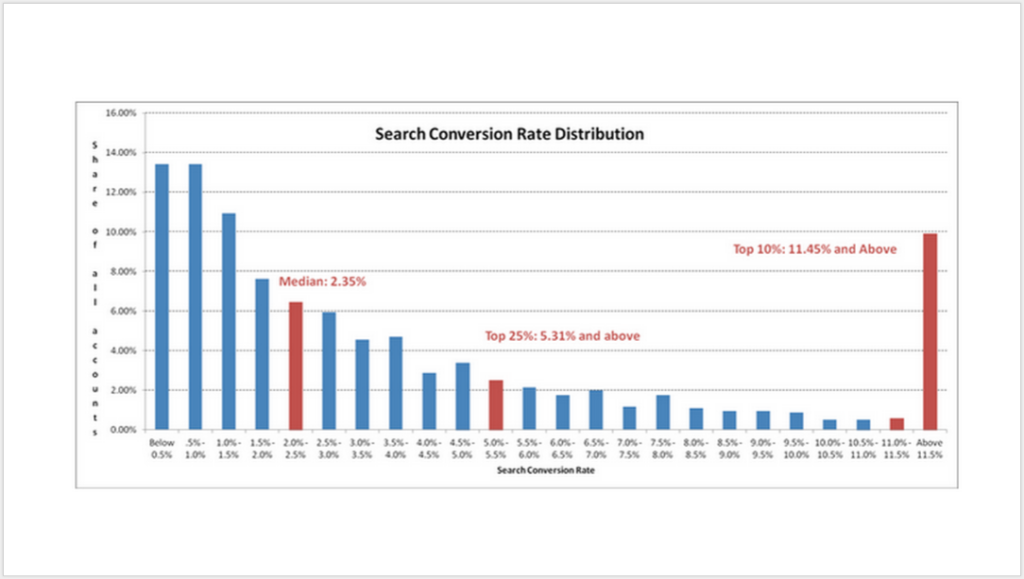
Look at your data to find your unicorn pages, and focus your optimization efforts there.
How to Build Dramatically-Better Landing Pages
So, how do you build a unicorn landing page? Chris shared five secrets from top-performing companies. Here are the top 3:
1. Get the Basics Right
Make the form front and center, like this example:
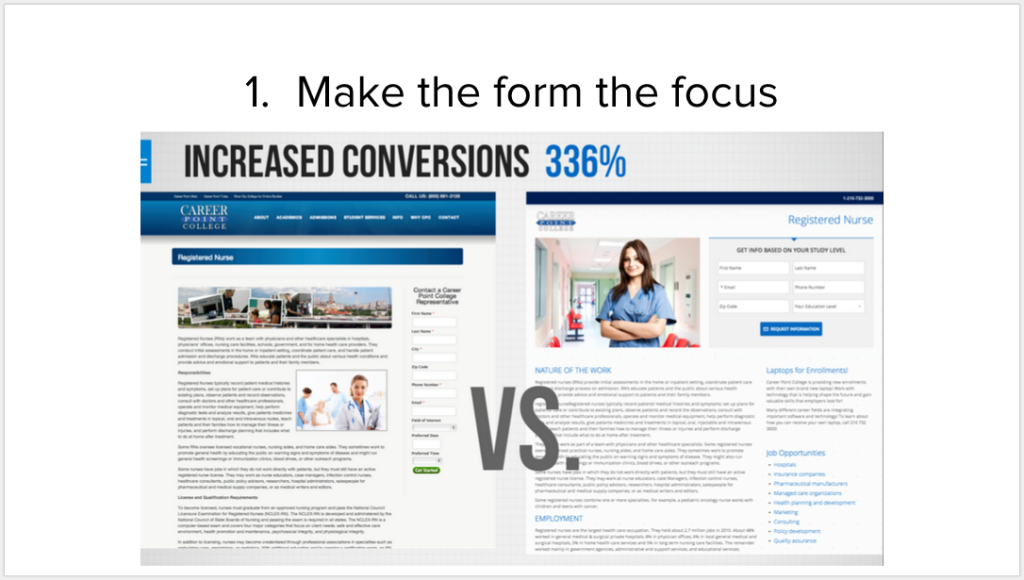
And then eliminate distractions by removing things like links, navigation, and footers, and keep all focus on the product or service you are selling. If you distract your visitors with lots of options, it becomes less likely they’ll perform the action you want them to take.
Make the sale funnel short as possible, one or two steps are OK to get the desired action, not more than that #CRO2015 #CRO
— Ayman Saa'd (@Amnsaad) February 19, 2015
2. Have a Mobile-Only Landing Page
Once you’ve taken care of the basics, you can move on to some more advanced (but still simple) optimizations, like creating mobile-only landing pages.
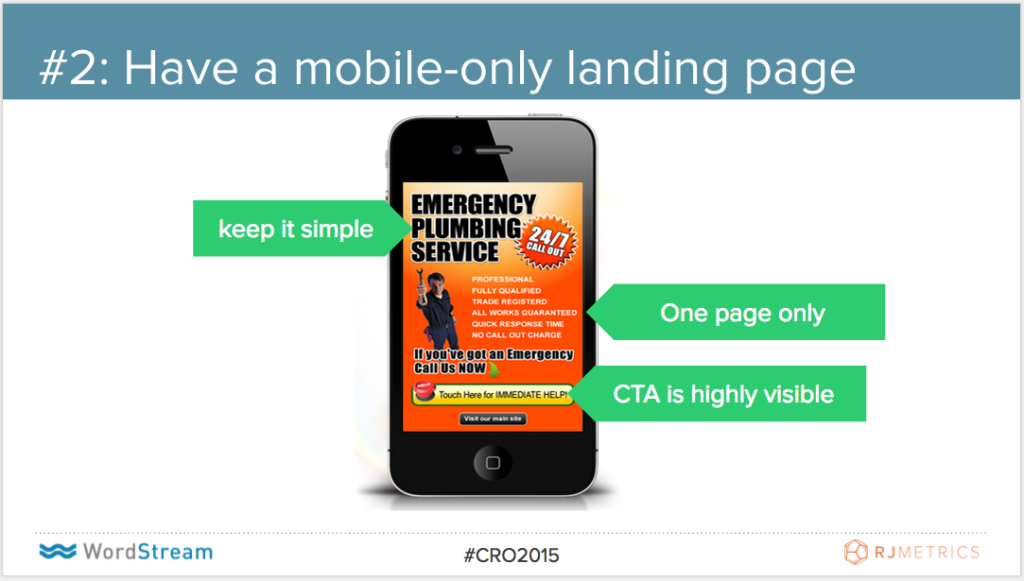
Keep it clear and simple. Mobile visitors will not spend time on a landing page they find confusing or frustrating.
3. Change Up the Offer
Another valuable optimization is to change up your offers. Most people stick with offering a free trial, so by trying something creative or unusual (like Wordstream’s Adwords Grader tool), you can really stand out from the pack.
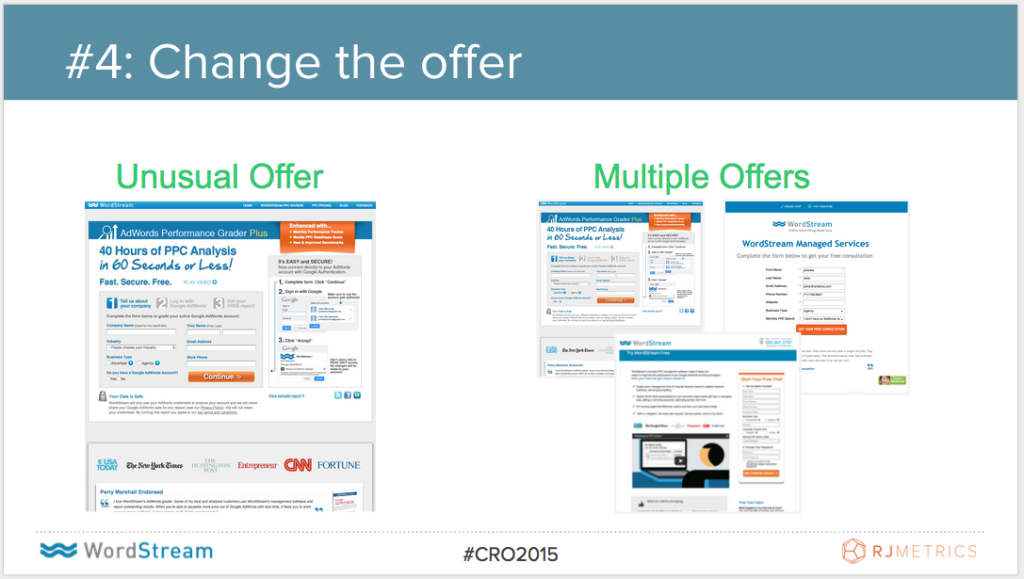
Optimize the Entire Campaign Funnel
Ok, so now that your efforts are focused and you’re spending less time optimizing tons of landing pages, it’s time to broaden your perspective from landing page conversion to campaign optimization.
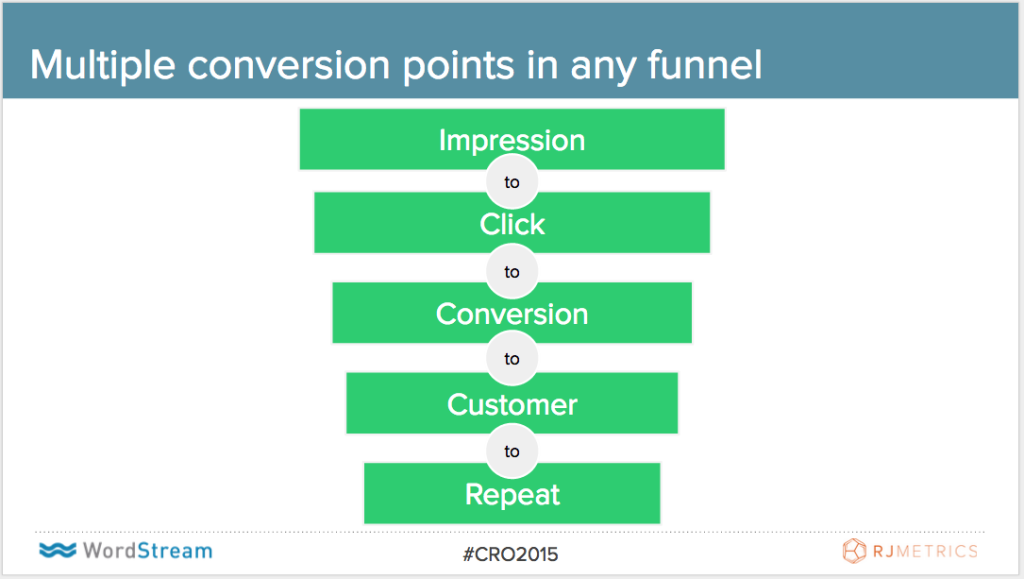
Anita shared her expertise on how to improve every conversion point — from impression to click, down to customer to repeat. The big takeaway here is to use a metric that allows you to find campaigns bringing in your best customers, and that metric is customer lifetime value.
I like the emphasis of @RJMetrics' webinar … not just about landing pgs, but the whole funnel #CRO2015
— Alessandro Roco (@alessandroroco) February 19, 2015
Customer lifetime value is the metric that allows you to find your most valuable customers, your unicorns. In our 2014 Ecommerce Benchmark report we found that an ecommerce store’s best customers (like their best landing pages) are unicorns. The top 1% of customers spends 30x more than the average customer.
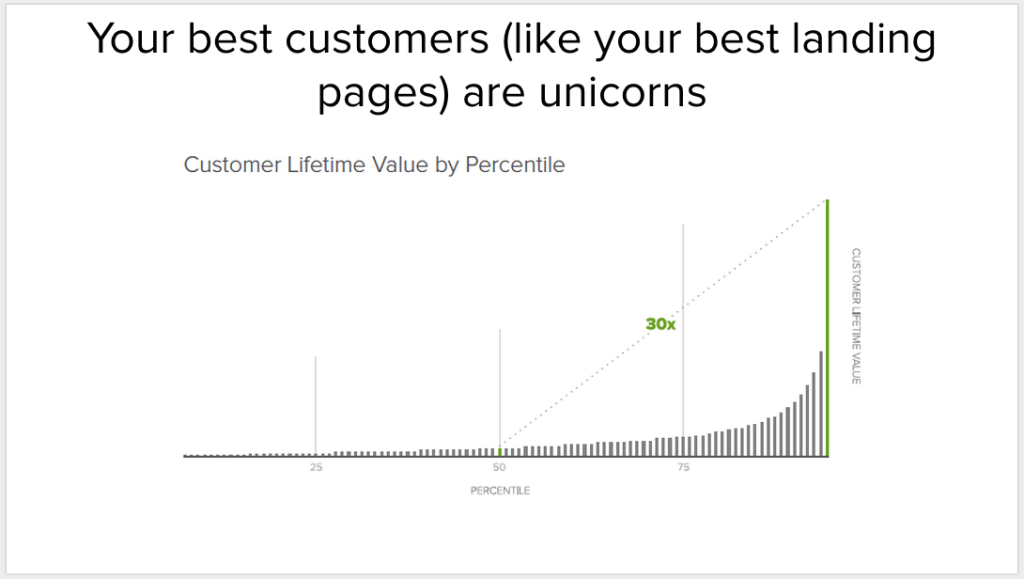
These customers are dramatically more valuable and the ability to acquire more of them will have a big impact on revenue. Using customer lifetime value to measure marketing ROI is the only way to identify the campaigns that are bringing in these unicorn customers.
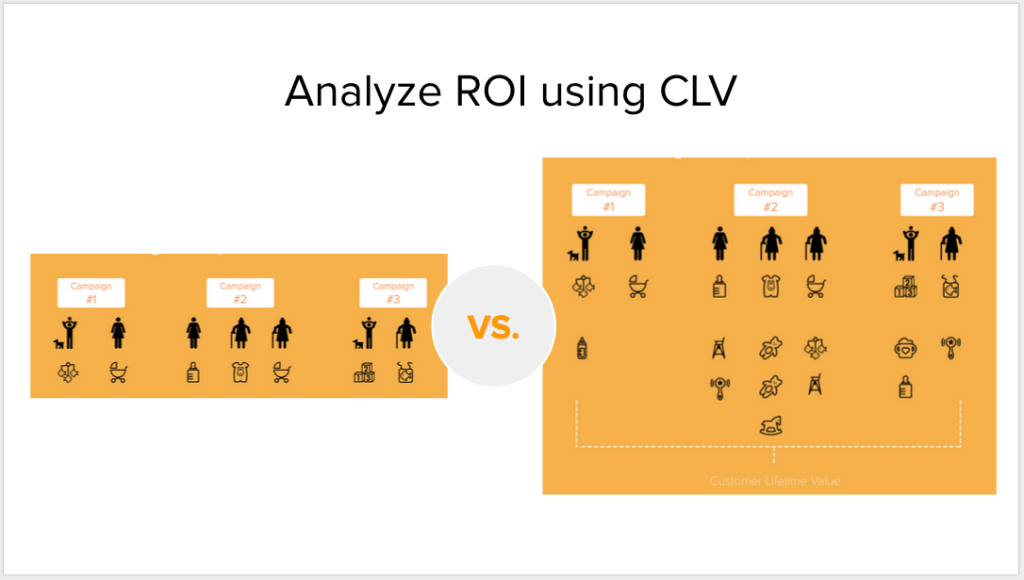
Once you know who your unicorn customers are and where they came from, you can start ramping up your efforts to drive repeat purchases, and strategize how to acquire more similar customers.
Focus on optimizing your unicorns. #cro2015
— Jonathan Pack (@jonrpack) February 19, 2015
Take Your Optimizations to the Next Level
Our presenters covered tons of information during this webinar. If you want to continue exploring this topic, here are some helpful links:
- Five best practices for UTM tagging
- RJMetrics customer case study on optimizing ROI using CLV
- A whitepaper on how to calculate your ROI correctly based on CLV
- 13 ideas for running smarter retargeting campaigns
- How to improve your PPC when you’re doing everything right
Thanks to everyone who joined us, and congratulations to Sari Signorelli, who participated in the Twitter hashtag contest (#CRO2015) and won a dozen cupcakes.
Yay–I won cupcakes–thanks @RJMetrics. Sending email shortly #CRO2015
— sarisignorelli (@sarisignorelli) February 19, 2015

